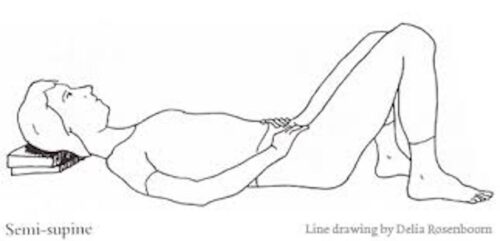
If you’re reading this, you know all too well how the relentless pace of a professional life can lead to stress. It’s not just the deadlines and the constant juggling of responsibilities; it’s the ever-present pressure to perform, succeed, and excel.
Stress has become an accepted companion for many in the workforce.
But what exactly is stress?
It’s our body’s response to any demand for change.
For professionals, this can stem from many sources: unyielding workloads, conflicting deadlines, and balancing work-life demands, to name a few. But it’s not always the apparent triggers that tip the scale; the subtle, cumulative pressures often build up stealthily.
While some pressure can sharpen our focus and energize our efforts, chronic stress can take a significant toll. It can affect our well-being, relationships, and even the quality of our work.
Prolonged exposure to high stress levels can lead to a host of health issues, from insomnia and headaches to more severe conditions such as heart disease.
A single approach rarely solves complex issues like stress. However, some methods have earned attention for their effectiveness in the professional world.
One of these is the Alexander Technique, a practice that teaches you to identify and change poor posture habits contributing to physical and mental stress. It’s a subtle yet powerful tool that can be particularly useful for people who spend many hours at desks or in meetings. It’s about aligning your body and easing the physical strains that often accompany mental stressor
But before we get into the details of the Alexander Technique and how it can offset the effects of stress, let’s be clear:
They KEY is understanding the nature of your stress is the first crucial step to managing it.
Once you’ve mastered that, the Alexander Technique can become part of your strategy for a healthier, more balanced professional life.

The Alexander Technique: Improving Posture to Reduce Stress
I’ve noticed the slight slouch that creeps in after hours at my desk. Maybe you’ve felt that tension in your neck and the ache in your shoulders. It’s not just uncomfortable; it’s a stress signal. I discovered the Alexander Technique to address this, and I believe it could also change the game for you.
The Alexander Technique isn’t a new fad. It’s been around since the late 19th century when Frederick Matthias Alexander, a Shakespearean orator, developed it to correct his own chronic laryngitis. He realized that his posture and movements affected his voice. His technique is based on how we move and our overall function and well-being.
You might wonder how posture can affect stress. As a working Alexander Teacher, I discovered that poor posture can increase muscle tension and pain, which signals the body to release stress hormones like cortisol. Your slumped shoulders aren’t just bad for your spine; they tell your body to stay on high alert.
The core of the Alexander Technique is about becoming aware of these harmful patterns and learning to move in ways more aligned with our body’s natural design.
It’s not about stretching or exercising; it’s about reeducating the body to move efficiently. Simple changes like adjusting the height of your computer monitor or how you sit in your chair can make a significant difference.
Take a moment and observe your posture right now. Are you craning your neck forward? Let’s straighten up gently. Imagine a string pulling you from the top of your head, lengthening your spine. Feel the difference? That’s the Alexander Technique at work.
Adopting these principles doesn’t require drastic changes to your daily routine. In the next section, I’ll guide you through breathing exercises that can complement the posture improvements you’re starting to make with the Alexander Technique. It’s about tiny shifts that lead to BIG IMPACTS.
To read more about the foundations of the Alexander Technique read this.

Breathing Exercises: A Quick Fix for Instant Calm
You’ve undoubtedly heard that deep breathing can help calm your nerves. But there’s solid science behind this advice. When you engage in deep, controlled breathing, you signal your body to activate its relaxation response, which is the counterpart to your fight-or-flight response.
Deep breathing can help lower blood pressure, reduce heart rate, and decrease stress hormone levels, opening a path to tranquillity.
One effective method is the 4-7-8 technique
To perform this exercise, follow these steps:
- Inhale silently through your nose, counting to four
- Hold your breath for seven counts.
- Exhale entirely through your mouth, making a whoosh sound and counting to eight. This exercise is a natural tranquillizer for your nervous system and can help you relax.
- Hold your breath for a count of seven
- Exhale entirely through the mouth, making a whoosh sound for a count of eight. This exercise acts as a natural tranquillizer for the nervous system.
Don’t wait for stress to build up. Schedule short breathing exercise breaks throughout your day. Start by setting aside a few minutes each morning, after lunch, and immediately before a big meeting. Like any new habit, consistency is KEY.
Breathing exercises don’t just offer a momentary respite; they can be life-savers in acute stress.
Imagine this: You’re about to make your first video to promote your website, and your heart is pounding, and your palms are sweaty. This is the perfect time for a quick round of the 4-7-8 technique, which will discreetly bring you back to a state of composure and readiness.
Regularly practising these exercises makes the transition to mindfulness and meditation almost seamless. Mindfulness encourages you to remain present and aware, while meditation allows for deeper exploration of your inner landscape. Both are excellent for managing stress long-term.
Mindfulness and Meditation: Foundational Practices for Stress Management
You have heard about mindfulness practice and meditation here on First-Hand Life as tools for managing stress. They are indeed separate practices, though often interconnected.
What is mindfulness?
Mindfulness is the art of staying present and fully engaging with the here and now, acknowledging and accepting one’s feelings, thoughts, and bodily sensations.
Conversely, meditation often involves a deliberate period of focus or contemplation to achieve mental clarity and emotional stability.
I will guide you through the immense benefits these practices offer, specifically tailored for busy professionals like yourself.
Mindfulness can:
- lower stress
- enhance emotional intelligence
- improve focus
all of which are valuable in a high-pressure work environment.
Meditation, by extension, can:
- reduce the anxiety that often accompanies a demanding career
- it can even increase grey matter density in parts of the brain related to memory and learning
- it can help form new habits and patterns
Beginning a mindfulness practice might seem daunting, but I can help simplify it.
Start by dedicating a few minutes each day to focus on your breath or the sensations in your body.
Gradually increase this time as you become more comfortable with the practice.
You don’t need a particular room or equipment; you need permission to pause and be in the moment.
Integrating meditation into a busy schedule can feel challenging, but even short sessions are beneficial. Consistency is key.
Try to meditate for at least five minutes each day, perhaps in the morning before you start your day or during a lunch break.
Various guided meditations are available online, tailored to specific durations, goals, and experience levels, making finding one that fits your lifestyle and preferences easier.
These foundational practices aren’t just another task on your to-do list; consider them investments in your long-term well-being and effectiveness.
In the next section, we’ll explore how to amplify the positive effects of these practices with positive affirmations and creativity, further enhancing your ability to handle stress and thrive in your demanding professional life.
Positive Affirmations and Creativity: Strengthen Your Mental Resilience
I often hear from colleagues that the sheer volume of daily tasks can leave little room for creative and uplifting activities that soothe the mind. Yet, it’s vital to address this by injecting positive affirmations and creativity into our day to break the cycles of negativity and stress.
What exactly are affirmations?
Positive affirmations are short, powerful statements that, when repeated, can change one’s mindset and, subsequently, one’s approach to work and challenges.
Crafting powerful affirmations begins with identifying the areas of your life you want to improve or the stressors you wish to overcome. This could be as simple as starting your day by saying,
‘I am capable of tackling any challenge that comes my way,’
which sets a determined tone for the day. Tailor make these affirmations so that they resonate with your personal goals and repeat them regularly, I find the morning routine and on breaks are perfect opportunities.
Let’s not overlook creativity as part of this equation. Engaging in creative pursuits can counterbalance work-related stress. It involves tapping into your inner resources to find solutions and expressions beyond the boundaries of conventional thought patterns.
Try to dedicate some time each week to a hobby or creative interest, whether sketching, writing, or even gardening. Connecting with your creative side can offer profound relaxation and a sense of accomplishment.
Integrating both affirmations and creativity into your workday doesn’t have to be a drag on your schedule. For instance, set your computer or phone wallpaper to something that represents your affirmations or creative interests. This visual cue can serve as a constant, subtle reminder throughout the day of your larger goals and the importance of maintaining a positive mindset.
The success stories are abundant: professionals who were on the brink of burnout but found renewed energy and a fresh perspective by prioritizing their mental health through affirmations and creativity. They often report reduced stress levels and enhanced performance and job satisfaction. By strengthening your mental resilience, you are not merely surviving your professional life but thriving in it.
Next, I’ll show you how to weave these individual techniques into a comprehensive, personalized stress management plan that suits your lifestyle.
It’ll be more than just a routine; it’ll be a sustainable approach to thriving amidst the demands of your busy professional life.
Creating Your Comprehensive Stress Management Strategy
You’ve explored several techniques to manage stress, from the Alexander Technique to affirmations. Now, crafting a strategy that resonates with your lifestyle and needs is crucial. Stress management isn’t a one-size-fits-all solution; it’s deeply personal and requires a tailored approach.
Begin by pinpointing your unique stressors and how they impact your life. This self-awareness is the foundation of effective stress management.
Reflect on what techniques have resonated with you the most. Is it the physical alignment of the Alexander Technique, the centring breathwork, or the creative outlet of affirmations?
With these insights, draft a plan that blends these elements into your daily routine.
Balance is critical; avoid overwhelming yourself with too many changes at once. Start small—maybe it’s five minutes of mindfulness in the morning or posture checks throughout the day.
Consistency is your ally. Regular practice solidifies these skills into habits that can weather the storms of professional pressures. Anticipate obstacles and devise workarounds in advance. Maybe you’re too rushed in the morning for meditation—could an afternoon session work instead?
Monitor your stress levels and the effectiveness of your techniques. Adjust your approach as necessary, and celebrate the small victories—every step forward is progress.
Remember, seeking help from a licensed therapist or coach can provide additional support and guidance. They can offer personalized strategies and help you navigate challenges effectively.
Your career doesn’t have to conflict with your well-being.
By committing to a stress management plan, you’re taking a stand for your health and career.
You can view your professional journey through the lens of care, not strain.


Want to get an alert when I publish a new First-Hand Life post?
Subscribe below to receive an email each time so you don’t miss anything.


Linden,
You’ve outlined some techniques I really needed. I carry a lot of stress on the regular, and get very overwhelmed by it all. I am going to use this article to help reduce my stress levels. I had no idea posture and stress are related, with your body sending out a message of high alert. Luckily my posture is pretty good, but I’ll be keeping in mind to maintain that. I’m going to take your advice with starting simple, concentrating on breathing techniques. Thank you for your insights, and I look forward to working a more stress free life.
Do you have any information on stress causing exhaustion? I seem to feel very tired when I’m extra stressed.
Hi Mike, I’m so glad I could help you promptly. No coincidence, eh!
I think a lot of people suffer from stress in these ways. Yes, it does cause exhaustion. It would be best if you established a mindfulness practice: try this one for novice millionaires, which I’m sure you are. Mindful MIllionaire – this is from another website.
Also, I suggest you try the Alexander Technique seriously—40 minutes a day is all you need. Just follow the instructions and lie in the exact position you can see.
This self-care article may help you, too: The Importance Of Self-Care When Living A First-Hand Life.
Blessings and Succes. Hope you feel much better soon – please let me know if so.
Keep in touch.
Linden
Hi Linden,
Your article highlights the importance of the Alexander Technique in enhancing posture and lowering stress, offering helpful insights into stress management strategies for time-pressed professionals. It also emphasizes how crucial mindfulness, meditation, and breathing techniques are to maintaining a stress-free work-life balance.
This topic raises two significant questions: How can professionals fit these stress-reduction methods into their busy schedules without being overburdened by additional work? What are the best ways to tailor these methods to suit specific requirements and work settings while ensuring they have the most significant possible impact?
Hello Sara. Thank you for these insightful comments and questions.
1. It’s best to plan your day ahead, either the night before or before you get out of bed. First, you need gratitude to acknowledge all you already have, then use visualisation and affirmations to create the day ahead in 3D animations. This will ensure that you notice when to relieve stress.
2. This tailoring depends on your business/niche/activities. It would be difficult to recommend this without knowing more about your needs. Please get in touch with me again so I can understand your situation, analyse your needs, and offer an action plan. Comment again on the site, and I’ll reply immediately. Alternatively, you can email me at charley@first-hand-life.com.
Hope this helps.
Blessings and Success.
Linden